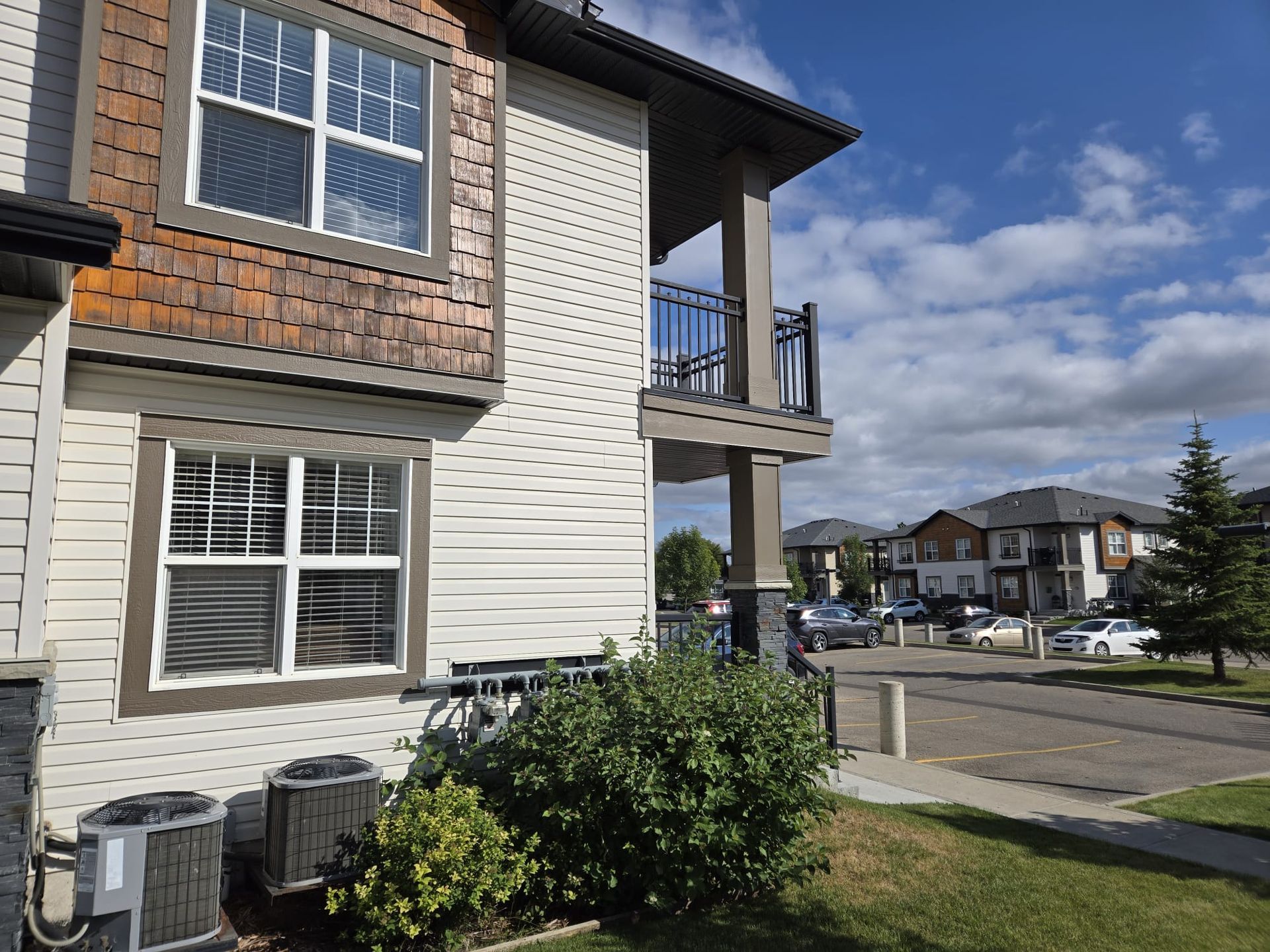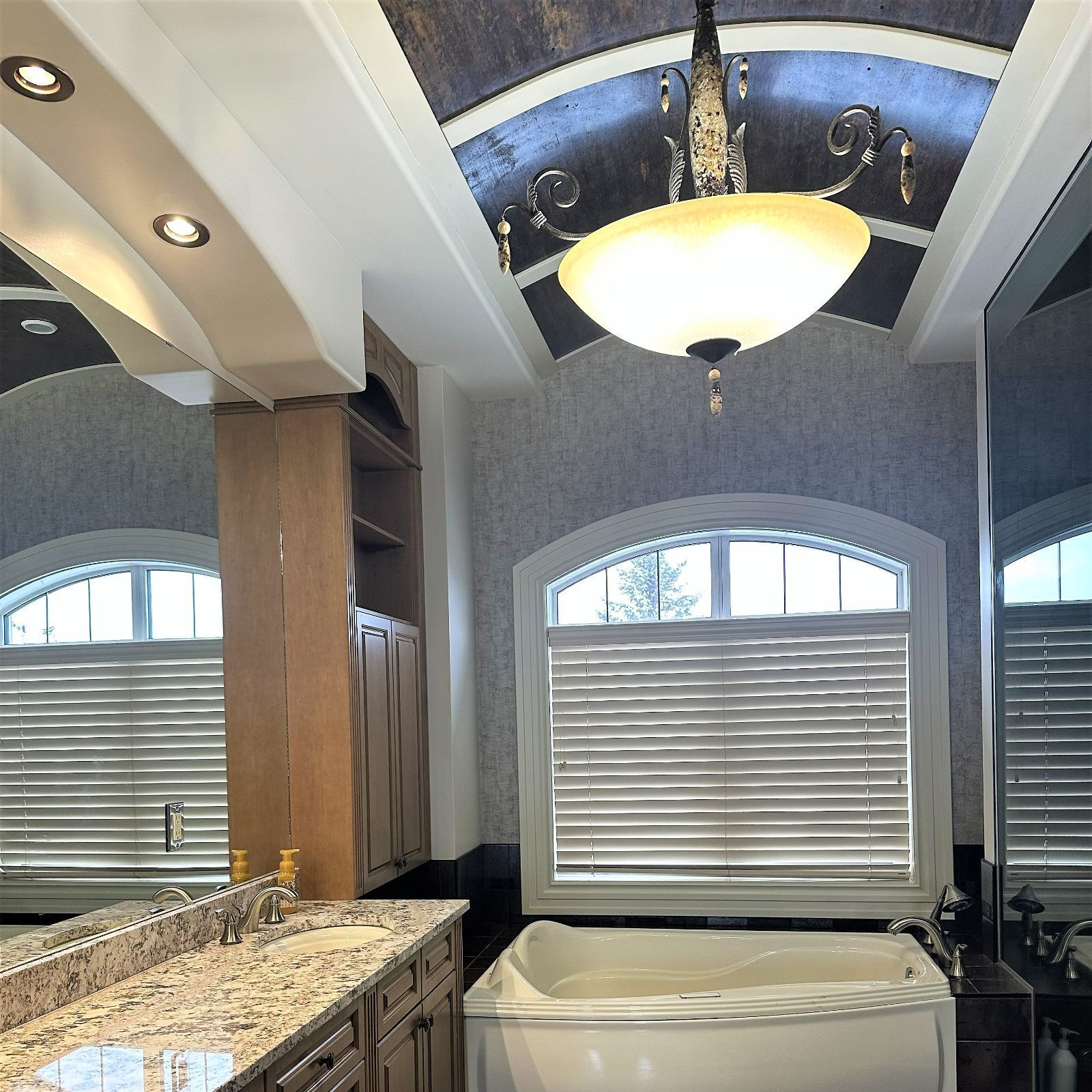Paint Types Compared: Gloss vs. Matte vs. Satin - Which Finish Wins?
The right paint types can completely transform your home's look and feel. Paint choices for interior painting go beyond just color selection - the sheen or finish plays an equally vital role. Paint sheen determines how much light bounces off the painted surface, with options ranging from no shine to high shine. Our experience shows how different gloss levels can boost or diminish a room's atmosphere. This makes understanding these differences essential before you start any painting project.
The market offers seven main interior finishes: Flat, Ulti-Matte, Eggshell, Pearl, Satin, Semi-Gloss, and High Gloss. Each finish has its ideal use in your home. To name just one example, matte paint does a great job hiding surface imperfections, but lacks durability and doesn't handle regular cleaning well. Satin paint stands out as the most versatile and durable option for interior walls. Its soft sheen creates beautiful effects in living rooms, bedrooms, and hallways. Gloss paint bounces more light and offers superior durability, making it perfect for trim, kitchens, and bathrooms. Note that higher gloss levels mean better durability. This piece will help you find the perfect finish for every room in your home.
Understanding Paint Sheen and Finish Types
Paint sheen does more than just complement your color choice - it shapes the entire look and feel of your room. The right sheen can transform how a space works and feels. You need to understand sheen to make smart choices about your painting projects, both inside and out.
What is paint sheen and how is it measured?
Paint sheen tells you how much shine or light reflection you'll get from a painted surface after it dries. The amount of light that bounces off instead of being absorbed by the paint determines its sheen level. Shinier finishes reflect more light. Sheen isn't just about looks - it makes a big difference in how durable and cleanable your paint is, and how it works with your room's lighting.
Manufacturers measure sheen by checking how much light reflects off a surface at specific angles. They use a 60° angle for shinier finishes and an 85° angle for flatter ones. Firwood, a UK paint manufacturer, breaks down gloss levels into specific ranges: full gloss (70-90%), semi-gloss (41-69%), satin (26-40%), sheen (15-25%), eggshell (10-15%), and matte (less than 10%). The paint industry doesn't have standard terms - different brands often use their own names and reflection levels.
Sheen ranges from flat (no shine) to high gloss (mirror-like shine), with matte, eggshell, satin, and semi-gloss in between. These differences come from the mix of resinous binder and powdery pigment in the paint. More binder creates smoother, more reflective surfaces, while more pigment scatters light and creates a matte look.
How sheen affects color and light reflection
Your paint's finish changes both its appearance and how you see its color. Glossier paints bounce more light, which makes light colors look brighter and dark colors appear richer. This happens because glossy surfaces create more contrast, with bright highlights, while matte surfaces spread color more evenly.
Light reflects in two main ways. Higher-sheen finishes (satin, semi-gloss, and gloss) create specular reflection, like a mirror where light bounces in one direction. Lower-sheen finishes (flat, matte, and eggshell) create diffuse reflection, scattering light everywhere. Specular reflection adds depth and interest but shows imperfections and might cause glare. Diffuse reflection hides flaws better but might look less dynamic.
Types of paint: latex vs oil-based and their sheen compatibility
Latex and oil-based paints each work differently with various sheen levels.
Latex paint uses water as its base. It dries fast and flexes well with temperature changes without cracking. It also has fewer volatile organic compounds (VOCs), making it eco-friendlier and less smelly than oil-based options. Today's latex paints resist peeling, fading, and yellowing better than ever.
Oil-based paint sticks great to most surfaces and leaves fewer brush marks thanks to its smooth leveling. It creates a more luxurious glossy finish than latex, which makes it perfect for trim, doors, and furniture. But it takes longer to dry and has more VOCs, so you'll need good ventilation.
Both types come in various sheens, though oil-based paints really shine at creating durable, high-gloss finishes. Oil-based semi-gloss or gloss remains popular for trim and wet areas where you need extra durability and shine, despite environmental concerns. Latex paints in matte, eggshell, or satin work best for walls and ceilings where you want a softer look while maintaining good performance.
Matte, Eggshell, and Satin: Low to Mid Sheen Finishes
Paint finishes with low to mid sheen give homeowners flexible options that balance looks and practicality. Each type of paint offers different levels of durability and light reflection, making them suitable for specific areas in your home. You'll need to know the unique properties of matte, eggshell, and satin finishes to pick the right paint for each room.
Matte paint: best for ceilings and low-traffic walls
Matte paint, also known as flat paint, has a soft, velvety look with minimal shine. Unlike shinier finishes that reflect light, matte paint absorbs it and creates a muted, flat appearance that many find elegant. This quality makes matte finishes work really well at hiding surface imperfections - a great feature when you have older homes with uneven walls or textured surfaces.
Matte paint's biggest strength is how well it hides minor flaws like bumps, cracks, and uneven textures without drawing attention to them. The non-reflective surface helps disguise drywall joints and patches, which creates a uniform look. Touch-ups are also easier since the lack of sheen helps new paint blend smoothly with existing coats.
We used matte paint mostly in low-traffic areas such as formal dining rooms, adult bedrooms, and ceilings. The higher pigment content means you'll need fewer coats than glossier paints, so it's cheaper for covering large surfaces. Yes, it is why many interior designers suggest matte paint over flat paint - it's more versatile throughout your home.
The biggest problem with matte paint is its limited durability and cleanability. Moisture damage, stains, and scuffs affect it more easily, so it's not the best choice for high-humidity areas like bathrooms and kitchens. Cleaning can be tricky because scrubbing might remove paint or leave visible marks.
Eggshell paint: a balance of durability and softness
Eggshell paint hits the sweet spot between flat and satin finishes, with a subtle sheen that looks like a real eggshell. The low luster softly reflects light and brings out more of your color's depth than flat paint while keeping a relatively matte look. This balanced finish has about 10-15% sheen level, which creates an ideal mix of looks and function.
Eggshell paint stands out as one of the most versatile options. Living rooms, bedrooms, hallways, and offices benefit from its slightly tougher finish compared to matte. The low reflectivity still hides minor wall flaws well, but you get better stain resistance and easier cleaning than flatter finishes. People choose it more than any other paint finish because it balances cleanability, sheen, and easy application so well.
Eggshell paint lasts longer than matte but isn't as tough as glossier options like satin. The higher Pigment Volume Concentration of 35% to 45% makes it slightly duller than satin. While it might show scuffs and scratches more easily than higher-sheen paints, eggshell is tough enough for most moderately-used areas in your home.
Satin paint: ideal for moisture-prone areas like kitchens
Satin paint creates a smooth, pearl-like finish between eggshell and semi-gloss. The velvety finish gives spaces a subtle glow instead of a bright shine, adding depth without too much reflection. A sheen level of 26-40% means satin paint shines more than eggshell but less than glossier options.
Satin paint really shines in moisture-prone spaces. The higher sheen creates a harder finish that resists moisture better, making it perfect for kitchens and bathrooms where humidity and condensation are common. This resistance helps stop problems like paint cracking, peeling, and mildew in these challenging areas.
Satin paint's exceptional durability and cleanability set it apart. You can scrub the surface without damage, which works great for high-traffic areas that need frequent cleaning. That's why experts recommend satin for children's bedrooms, playrooms, kitchens, bathrooms, and laundry rooms. As one expert puts it, "Semi-gloss and satin finishes are the raincoats of the paint world—durable, moisture-resistant, and easy to clean".
Semi-Gloss and Gloss: High Sheen Finishes Explained
High-sheen paint finishes are durable and visually appealing compared to lower-sheen options. These resilient finishes create striking surfaces that handle daily wear well, making them perfect for specific areas in your home.
Semi-gloss paint: trim, doors, and high-traffic zones
Semi-gloss paint creates a sleek, radiant look with a hard, lasting finish. Its glossy surface stays smooth and fights off moisture, fading, and stains. This paint works hard and shines in spaces that need frequent cleaning and moisture resistance. Kitchens, bathrooms, and utility areas with water exposure benefit from semi-gloss paint. Dark spaces like hallways and laundry rooms brighten up thanks to its reflective quality.
Semi-gloss paint is a great way to protect trim, moldings, and doors that face regular contact and damage. You can scrub it without worry, and it stays flexible enough to avoid cracking. Homeowners who want durability with a moderate shine will find semi-gloss paint brings practical elegance that lasts.
Gloss paint: maximum durability and shine
Gloss paint sits at the top of the sheen chart and creates a mirror-like finish that changes surfaces dramatically. Light bounces off this paint more than other finishes, which adds depth to architectural features. This is a big deal as it means that gloss paint reflects more light and resists stains better than any other paint type. Scratches, dents, and stains barely affect its tough, shiny surface compared to other options.
Doors, cabinets, trim, and high-traffic areas look sophisticated with gloss paint. The glass-like finish looks great and lasts longer. Homeowners love how easy it is to clean - grease, water drops, and fingerprints wipe right off without damage.
When to avoid high-gloss finishes
Gloss paint's durability comes with some real drawbacks. These reflective finishes show every tiny flaw in wall surfaces. Wall bumps, dents, and rough spots become obvious under the reflective surface. High-gloss finishes don't work well on older walls with many imperfections.
Perfect high-gloss finish needs careful prep work, including sanding, filling, and priming. You must apply it precisely because the paint reveals every brush stroke and roller mark. Even pros struggle with high-gloss paint, especially in humid weather that affects how well it sticks.
Comparing Durability, Cleanability, and Appearance
Paint types work best in specific areas of your home based on their practical features. Your painted surfaces will look beautiful longer when you match the finish with how you'll use the space.
Which finish hides imperfections best?
Paint finishes vary in their power to hide flaws across the sheen spectrum. Flat and matte finishes do an excellent job covering surface blemishes like nail holes and patches. These finishes don't reflect light, which lets more paint pigment show through and creates an even look. Matte paint works great in older homes with textured or uneven walls. On the flip side, higher-sheen paints like semi-gloss and gloss work almost like magnifying glasses for surface flaws. The same reflective quality that makes these finishes attractive also shows every bump, crack, and uneven texture. Even tiny flaws stand out under glossy paint.
Ease of cleaning: satin vs gloss vs matte
A paint's sheen level determines how easy it is to clean—higher gloss means easier cleaning. Matte finishes have a porous texture that tends to trap dirt instead of letting you wipe it away. Regular cleaning can also create shiny spots on matte surfaces. Satin finishes give you the best of both worlds. They're much easier to wash than flat paints and resist stains well. Gloss and semi-gloss paints top the list for cleanability. They handle moisture and steam well, making them perfect for kitchens and bathrooms where you deal with grease and water often.
Durability in high-traffic areas
The higher the sheen, the more durable the paint. Flat paint looks great but wears down fastest. Eggshell finishes hold up moderately well, making them good choices for living rooms and offices with less foot traffic. Satin paint proves practical in busy areas—you can clean it regularly without damage. Semi-gloss and high-gloss finishes lead the pack in durability. They handle scuffs, scratches, and daily wear better than other options.
Choosing the Right Finish for Each Room
Your home's rooms need different paint finishes based on how you use them. The right sheen will make your painted surfaces look beautiful and last longer.
Living room and bedroom: eggshell or satin?
Family rooms, living rooms, and bedrooms look great with eggshell or satin finishes. Smooth walls in good condition work well with both options. Eggshell gives living spaces a soft look that holds up well. Satin works better in bedrooms—especially when you have children—because it's easier to clean. Many people choose satin for busy living areas since it has a pearl-like shine and hides small wall flaws.
Kitchen and bathroom: semi-gloss or gloss?
Kitchens and bathrooms need extra attention because of moisture. Satin or semi-gloss finishes work best here since they resist humidity and clean up easily. Semi-gloss resists moisture well and has a sleek shine that wipes clean quickly—perfect for humid spaces. Cabinet surfaces look more professional with semi-gloss, and it lasts longer than less shiny options.
Ceilings and hallways: matte or flat?
Flat or matte finishes work best on almost all ceilings. These non-reflective paints stop light from bouncing back and hide common ceiling flaws. Hallways need satin finish because it balances looks with durability and handles constant foot traffic well.
Trim and cabinets: gloss or semi-gloss?
Trim, moldings, and doors usually need shinier paint than walls. Semi-gloss creates a moderate shine that stands out while staying durable. Cabinets look excellent with either satin (also called pearl) or semi-gloss. Designers often suggest satin finish for cabinets because it's easy to clean without being too shiny like high-gloss.
Key Takeaways
Understanding paint sheen levels is crucial for achieving both the esthetic and functional goals of your painting project. Here are the essential insights to guide your paint selection:
• Sheen determines durability: Higher gloss paints offer superior moisture resistance and cleanability, while matte finishes excel at hiding wall imperfections but require gentler maintenance.
• Match finish to room function: Use matte for ceilings and low-traffic areas, satin for kitchens and bathrooms, semi-gloss for trim and doors, and eggshell for living spaces.
• Consider your wall condition: Glossy finishes magnify every surface flaw, making them unsuitable for textured or imperfect walls that benefit from matte's concealing properties.
• Balance esthetics with practicality: Satin paint offers the best compromise between visual appeal and functionality, providing moderate shine with good durability for most interior spaces.
• High-traffic areas need higher sheen: Children's rooms, hallways, and frequently cleaned surfaces perform better with satin or semi-gloss finishes that withstand scrubbing and daily wear.
The key to successful interior painting lies in matching your paint's sheen level to each room's specific demands—considering factors like moisture exposure, traffic patterns, and wall condition to ensure long-lasting, beautiful results.



